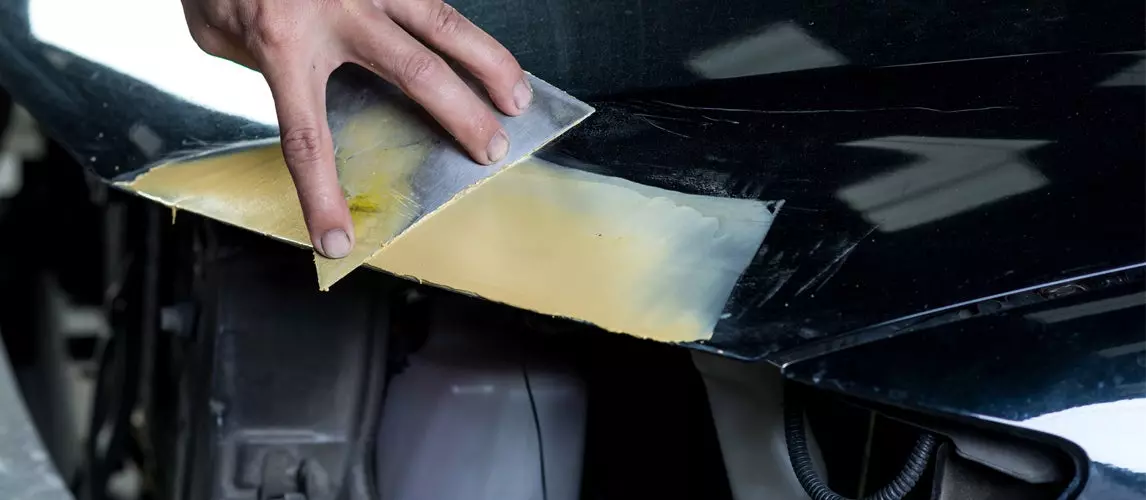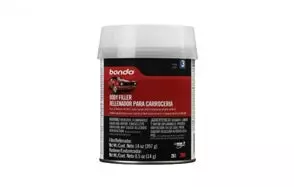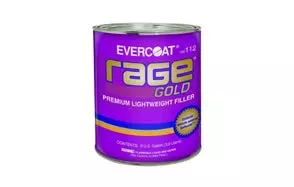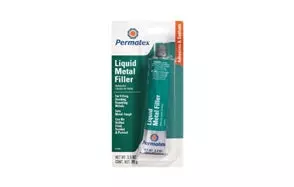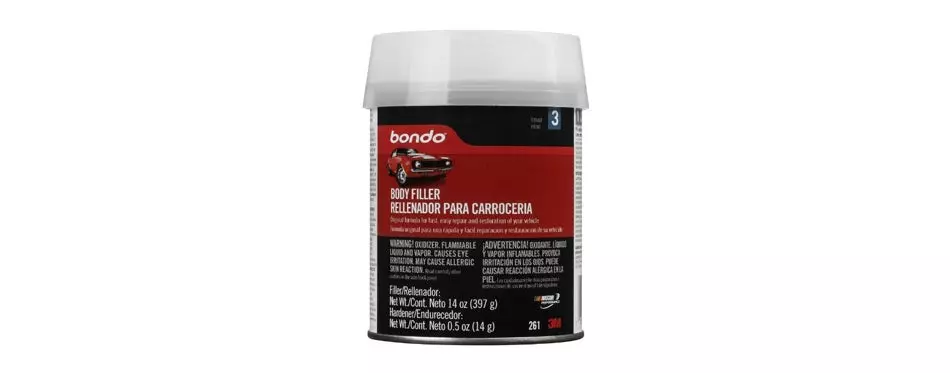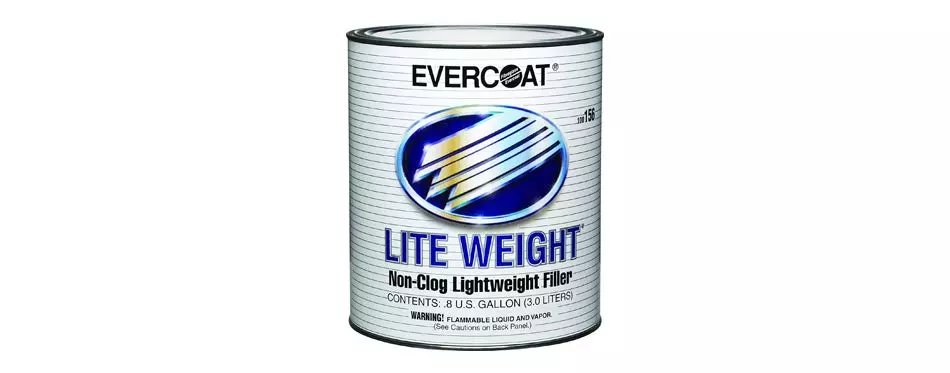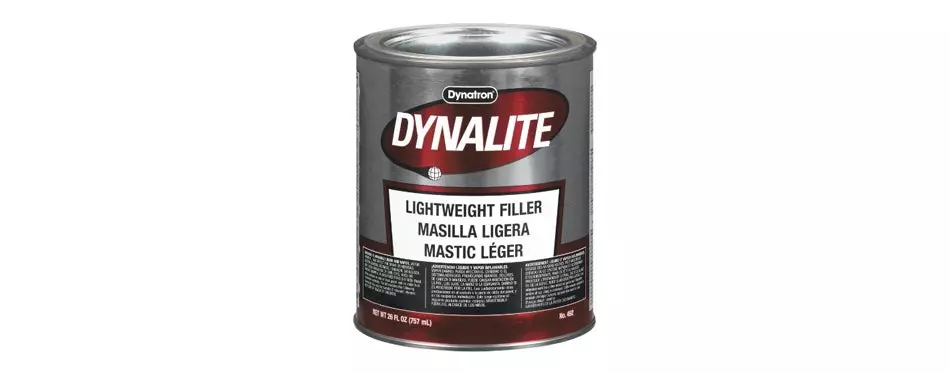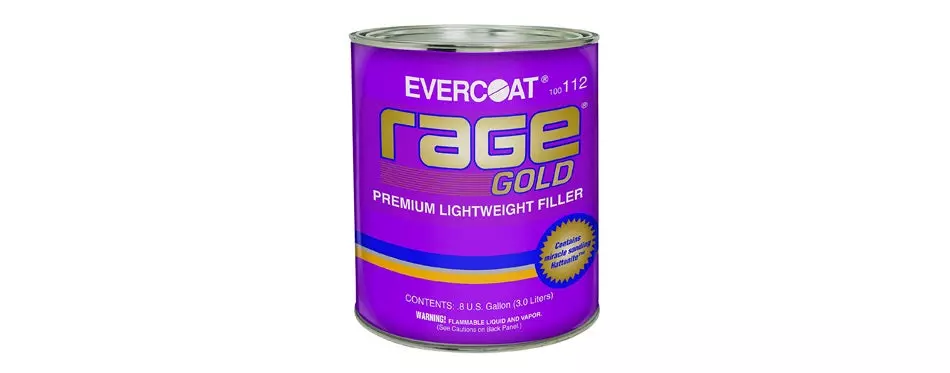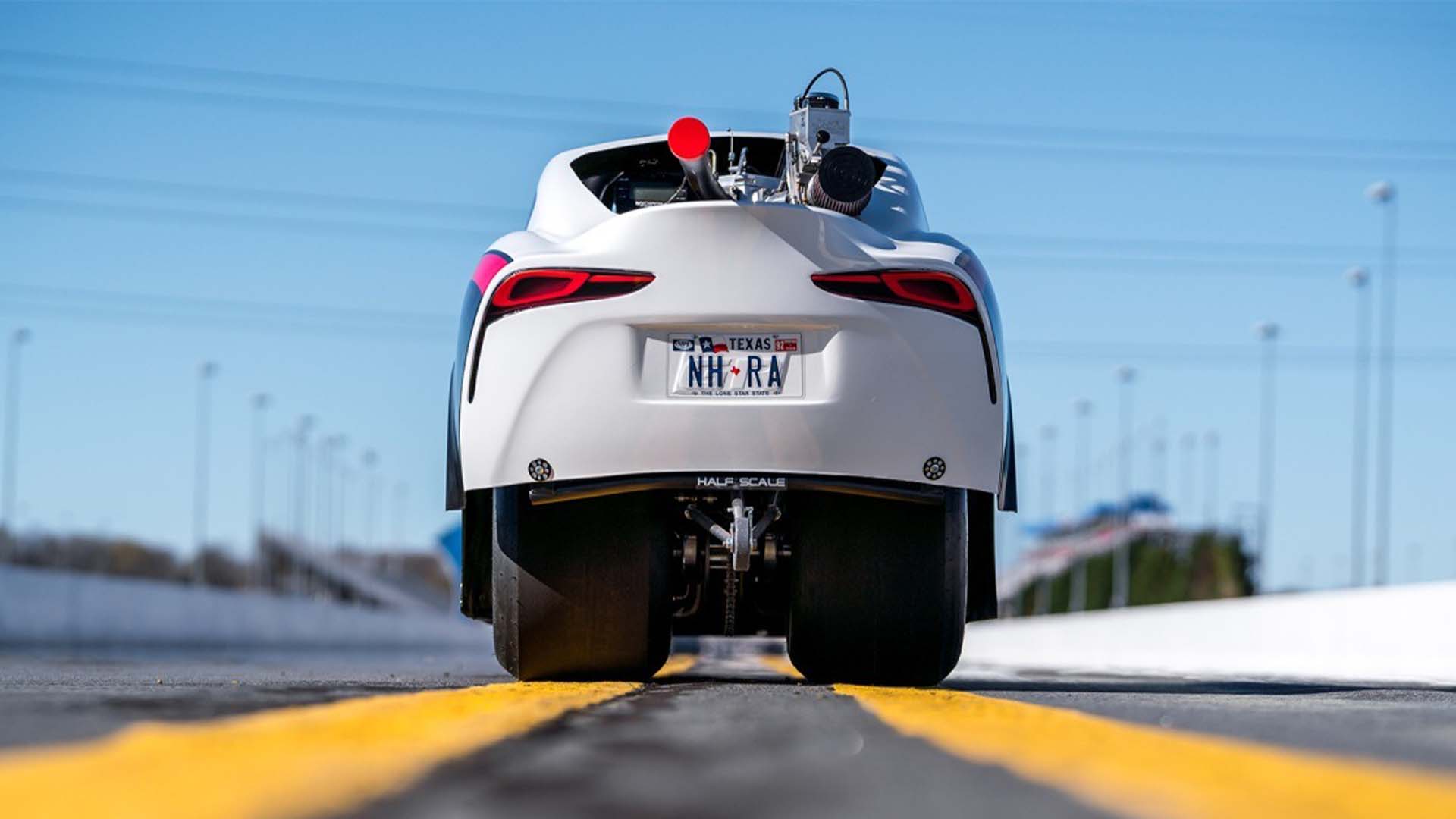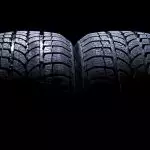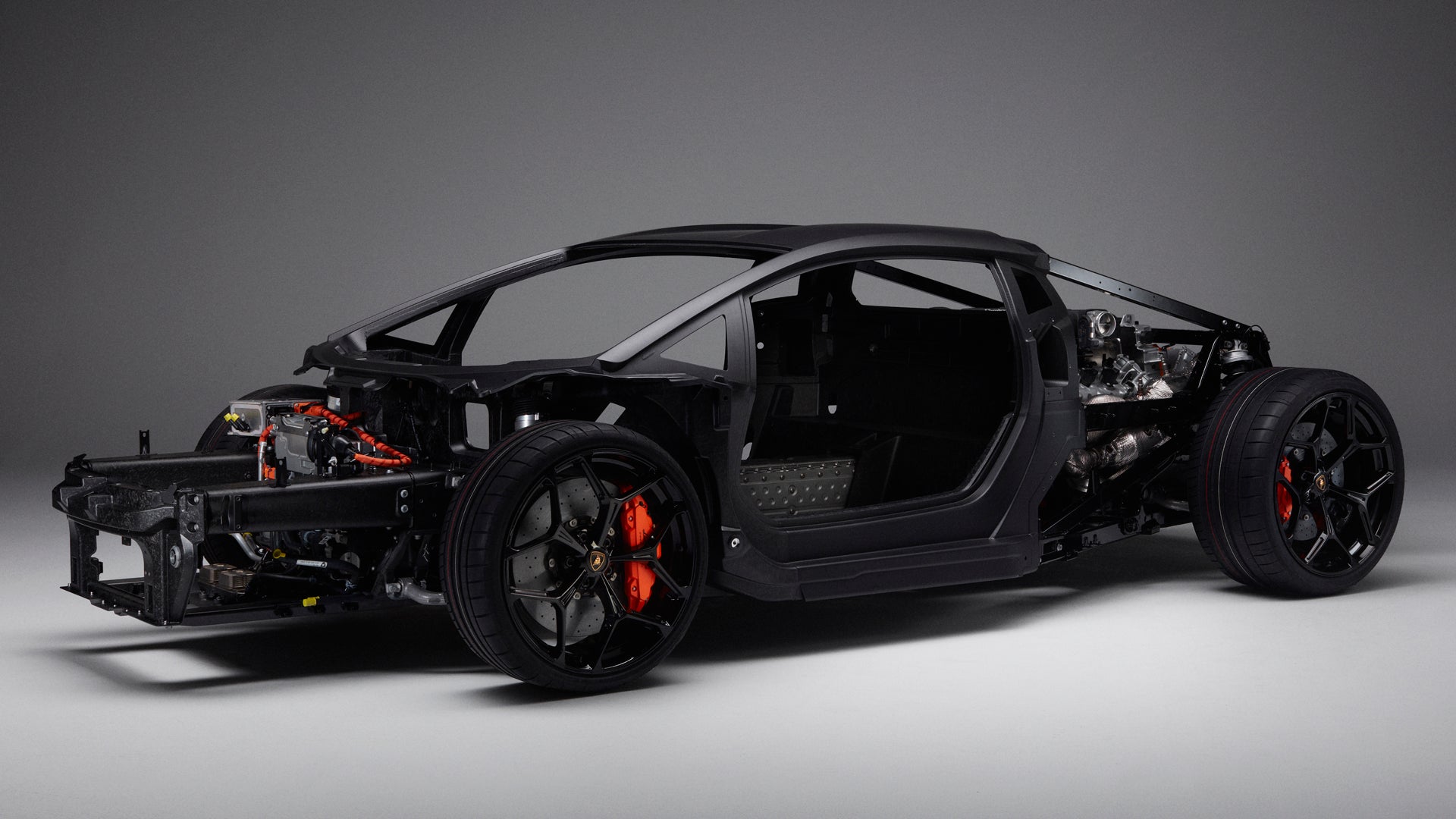Dings, dents, scratches and holes. Whether caused by debris strikes, minor collisions or even that time you opened your door too close to that fire hydrant. Any vehicle body can end up pitted with minor surface damage like this, no matter how carefully you drive.
They can ruin your cars appearance and they can lower the resell value – all in all they are pain in the backside. Car body filler has been the go to solution for at home repairs of this type of damage for decades. As time has progressed so too has body filler itself, and today you can find high quality products for lower than ever prices.
In this article we’re going to take a deep dive look into fillers, and help you to find the best car body filler to get your bodywork looking as good as new.
The Best Car Body Filler
We’ll kick off our list with this product, a Bondo body filler – though it’s actually made by 3M (Bondo is a brand name) so technically it’s a 3M body filler. Does it matter? Only that we want to give credit where credit is due because we’re starting with an early front-runner for best car body filler on the market.
Bondo (and 3M) have a well-earned rep for making great car filler products and this example is from the premium end of the market. It is a lightweight filler, which makes it perfect for fixing up the little dings and dents that are the most common type of damage a vehicle will pick up during day-to-day driving.
This formula is a two-part putty compound, comprised of high quality filler and a hardener. It is designed to deliver an extremely durable and non-shrinking formula. It hardens in minutes and is nice and easy to sand to a smooth finish and is waterproof. When mixed it takes on a soft pink color for easy visuals when spreading and it is compatible with a huge range of materials.
- 14 Oz. Can
- Easy Mix & Smooth Spread
- Pink Color for Easy Visibility
- Non-Shrinking Formula
- Wide Material Compatibility
- Brand 3M
- Model 261
- Weight 1.2 pounds
The next product we’ll look at, Permatex 25909 Liquid Metal Filler, is all about ease of use. As a compound that is part of a wider family of adhesives, there is no mixing required here. Simply pop the lid off of the tube, squeeze it into the cracks, dents or dings and smooth it down.
Simple and easy! As it is an adhesive compound, it is also naturally equipped with excellent adhesive qualities. That is another reason why it is so easy to use – because you can trust that it will adhere to the vehicle quickly and efficiently. This brand of filler also has a huge range of compatibility with a number of materials like metal, wood and concrete.
Once in place this body filler product is designed to provide a high level of resistance to water, oil and gasoline. Naturally, this product is not designed for smoothing out wider areas of vehicle damage – there is simply not enough material in the tube and it would be extremely time consuming! But for spot fixes of small areas of damage it is easy to use and provides very good value for money.
- 3.5 Oz of Product
- Perfect for Small Repairs
- Easy to Use
- No Mixing Required
- Brand Permatex
- Model 25909
- Weight 4.6 Ounces
Another Bondo body filler next, though just like last time it is actually a 3M body filler. What we have here is a professional grade body filler (hence the Gold tag – sorry it doesn’t actually add real gold to your car body!)
What it does have though is advanced 3M-resin technology that is almost worth its weight in gold – at least if you are trying to repair dings and dents in your vehicle. This filler is by the way specifically designed for use on galvanized steel. That makes it especially well suited for use on vehicles made after 1998.
It boasts an advanced resin technology that is designed to provide an easy application and a very smooth finish after sanding. It is dried and cured in around 20 minutes after application, and once dry it will provide a waterproof finish to protect against rust. It is non-shrinking, and the red color to the hardener gives the product a pink finish when mixed for easy visibility during application.
This product does have a price tag a little higher than many other filler products on the market. But all in all this is a very high quality, professional grade car body filler.
- 14 Oz of Product
- Designed for Use On Galvanized Steel
- Quick Drying
- Brand 3M
- Model 233
- Weight 2.27 pounds
With a somewhat sizeable price tag, this is one of the pricier options on the list today. That being said though, you do get a big ole’ can of product here, with enough product to tackle a significant restoration job.
Not only do you get a lot of product, you are also getting a lot of high quality product here. This quality is especially easy to see in the high grade manufacturing process that Evercoat has brought to the table here. The first big stand out is the fact that this car filler has been vacuum processed. That has been done to try to reduce pin holing during drying. That in turn leads to a smoother finish first time round.
That finish is also going to be enhanced by how creamy this filler is in texture. We’re being serious here, don’t get confused and put a dollop of this in your coffee, it truly is that creamy. That extra creamy texture makes it extremely easy to spread, again setting you up for a very smooth finish once dried.
- 1x Gallon Of Material
- Vacuum Processing
- Creamy Spreading Texture
- Brand Evercoat
- Model 156
- Weight 12 Lbs
3M body filler is good stuff. We don’t need to beat around the bush here, 3M make good car body filler. Period. What we don’t understand is why they seem to be embarrassed to admit it! Yes, this is another 3M body filler masquerading under yet another brand name.
Again, it is a high quality one with a lot of very interesting features. It is for example a 2-part polyester compound that has been designed to mix very easily with the hardener. The coverage level is lightweight, making this ideal for tackling surface dings and dents on the vehicle. Just as we saw with the other 3M products adhesion is outstanding – just as you would expect with fillers products from this manufacturer.
Also in common with previous products from this brand; it has a drying and curing window of around 20 minutes. Once dry the formula is designed to be easily sanded for a professional level smooth finish. It is also great to see that this filler is compatible with just about every paint system out there.
This is professional grade auto body filler with a lot of impressive features under the hood.
- 1 Quart of Product
- Lightweight
- 2 Part Polyester Compound
- Brand 3M
- Model 492
- Weight 2.2 pounds
Best Car Body Filler Buying Guide & FAQ
In our buying guide, we’ll take you through the features that you should keep an eye out for when picking out the best car body filler for you. After that, we’ll take a look at how best to use your new tool and answer some of the most frequently asked questions about this extremely useful product.
What to Look for In Car Body Filler
- Easy to Use
First and foremost you need car body filler that is easy to use. That ease of use will be spread over several different areas however. So for example look for filler that is easy to mix. Secondly, some fillers are designed to change color when mixed. This can help you to see the material that bit easier as you are spreading it onto the vehicle panels.
- Easy to Spread
You ideally want a filler that spreads like butter on warm toast! To that end, look for putty or semi-vicious fillers that will work well with spreader tools (more on them in a minute!)
- Material Compatibility
We’re going to assume that your vehicle is made of metal. If that is the case then it may not be the best idea to select a filler that is only compatible with wood. At the same time, you have to remember that if your vehicle is relatively modern (we’re talking if it was made after 1998 or so) then the metal will almost certainly be galvanized. Just make sure you are picking a filler that can bond with the material you need to repair.
- Material Compatibility 2
At the same time it can also be extremely helpful to select a filler with compatibility across a wide range of materials. After all, to answer our flippant question above, yes the vehicle probably is made of metal. But it is also made of other materials. Get a filler that bonds with metal and plastic, for example, and you can repair that dented panel and fix up the plastic decals too.
- Product Size
Just how much filler you anticipate using will of course be largely down to the size of the repairs you need to perform. If you only have shallow surface dents and dings then it can be tempting to buy a smaller sized product. Whilst that may save you some cash upfront in the long run it may be a money burner. A small pack of filler is only going to have enough material for a few, small-scale repairs. A gallon of the stuff though and you are all set for multiple repairs!
- Spreader
Not many car filler products will come with spreaders, in fact we hardly see them around anymore. So technically this is not something to look for when buying your body filler. On the other hand though a good set of spreaders can really help you to get the most out of your product. Therefore we would very much recommend picking up a good set of spreaders at the same time as you are buying your body filler.
Types of Car Body Fillers
Broadly speaking there are three types of body filler on the market. They are Metal, Fiberglass and Lightweight. Read on to discover more about the three types!
- Metal
Metal filler is easily one of the mosy common styles of car body filler on the market. That is particularly useful since most of the vehicle is made of metal too. There are a number of examples of this type to be found on our product list above. Its general characteristics are that it will resist shrinking after drying and it also provides a good level of waterproof protection. It’s nice and long lasting, and will generally remain in place for the remainder of the car’s lifespan.
- Fibreglass
Body filler of this type is specially formulated to contain particles of both fiberglass and also sometimes metal. This makes for a very tough and long lasting filler product that is especially suited for large-scale repairs. It can be difficult to apply and requires a heat treatment to dry and cure properly however. Because of this it is mainly only seen within professional bodywork shops.
- Lightweight
In many ways lightweight body filler is very similar to Metal body filler as we discussed above. The main difference here is that, as the name implies, it is a lightweight formula. On the one hand that means it is not suited for deeper dents and dings, but on the other it does mean that it is easier to apply. It is also much easier to sand, giving a smoother overall finish than most Metal body fillers. Lightweight is therefore ideal for repairing shallow surface damage. It can also be applied onto of a base layer of metal filler to give a very smooth, premium finish.
Tips and Tricks for Using Auto Body Fillers
There are a few tips and tricks out there to ensure that you get the most out of your car body filler. In this next section (because we’re awesome!) we’ll take a look at a few of them, starting with:
- Assessment
Before you do anything take a little time to assess the damage that you want to repair. You want to be looking for a few things here. Firstly, you need to assess the extent of the damage, specifically the size of the area that has been affected as well as the depth of any dents and dings.
- Compatibility
As part of the assessment process you should also be checking out what material you need to be working on. You can potentially save a lot of time and money here too. Have you dented both the bumper and the bodywork? If so, keep an eye out for body filler than can bond with both plastic and metal and you could make some savings here.
- Get Physical!
Or rather, don’t be afraid to get physical! Get the panel off (or get behind it with the car jacked up if needs be) and take a hammer to the rear of any major dents. Not only is this a great stress reliever, but also you’ll be surprised how much give there actually is in vehicle bodywork. Any degree of denting you can hammer back into place is a repair that is not left solely for the body filler to take care off.
- Mix It Up
Like a good cocktail, the effectiveness of your filler is all in the mix. For the product to work effectively, the mix of filler and hardener needs to be just right. We would very much recommend that you read the included instructions with whichever filler product you go for, though a general rule of thumb is that the mix will be one part hardener to fifty parts filler. Of course if you pick up a pre mixed product then you don’t have to worry about this!
- Smoothly Does It
Our next recommendation is easier said than done! However try to remember that you should try to always attempt the smoothest application of filler as you can achieve. Yes, you can sand over the application once it has dried. But by applying the filler smoothly you will negate having to send too much time and energy sanding. Lets face it, sanding is not the most fun activity, is it?
- Practice Makes Perfect
If you have never used auto body filler before then don’t be afraid to practice – in fact we recommend it! Get a piece of scrap wood or something flat but stable like an old wooden clipboard – literally anything, an old pizza box will do! Mix up your filler then apply it to your practice surface. This allows you to practice two things before you move onto the car. First it lets you practice the mix of your specific filler and hardener so you know you have the right ratio down before you begin. It also lets you practice using your applicators, so you will be able to get that filler on nice and smooth when it comes time to actually work on the vehicle itself.
- Get a Good Applicator
Finally, and we already mentioned it above so apologies for repeating ourselves! But that said, we feel that a good applicator is such an important part of the process that we have just got to shout it again down here – make sure you get, and use, a good applicator! Some pro body shop guys we know even go so far as to make their own, with the applicator cut to the curves and bodywork lines of the vehicles they work on. You don’t need to go that far yourself, but do pick up a pack of premium applicators – ideally of different sizes – at the same time you buy your filler. Trust us, it is very much worth the extra little investment.
Related Posts: Best Car Scratch Removers and Car PolishesBest Car Body Filler FAQ:
Do you have any questions about body filler? Well in the section above we looked at how to pick the right body filler for you and your vehicle. In the next section we’ll answer the most frequently asked questions about this useful product.
That way not only will you know how to pick the right body filler – you’ll have all the knowledge you need to use it properly too!
Do you have any tooth cavities that have been filled? Even if you don’t, we’re sure you are aware of the principle? Car body filler is somewhat similar to teeth filler. Note here we’re talking in terms of function, not in materials or formulas. Don’t use your car body filler for impromptu dentistry repairs! It is, as we said, the principle that remains similar. If you damage your tooth, a filler is used to inject a tough material into the tooth to repair it. Damage your car bodywork and put a dent or ding into it, and the car body filler does exactly what it says on the tin – it “fills” the hole or gap left behind by the damage. Once the dent, ding or hole is filled you can smooth out the filler so it matches the level of bodywork – you don’t want any bumps! Once you’ve done that you can apply a layer of paint and it will be as if the damage never occurred in the first place…
You can apply some body filler products to bare metal, provided that the filler itself is formulated to bond with metal. Remember that you are not dealing with bare metal here either. That is especially true with modern cars, many of which use galvanized steel or even aluminum in the construction of the bodywork. Again just double check that your filler is fine to bond with the material and you shouldn’t have any major problems.
This will depend on a number of factors, but generally speaking you should allow around 20 to 30 minutes between application and sanding. Some of the factors that will affect this include the product you have actually selected, with some brands of car body filer drying a little faster (or slower) than some others). The thickness of the filler will also of course have an impact on drying time, so allow more time for drying when repairing deeper dents and even holes. Lastly weather conditions can play a part too. If you are working out in the open in the middle of summer, the drying time is going to be cut back a little.
Our Top Pick
We may well have flagged this a little early in our reviews, but we were very impressed with the Bondo (3M) 261 Lightweight body filler. It is just a high quality car body filler that just about ticks every box on the list when it comes to the features that you want to see on a top rated automotive body filler.
It is easy to mix and very easy to spread. It hardens relatively quickly, and once set the filler has a formulation designed to be sanded down with ease for a premium, ultra smooth finish. The fact that you get 14 ounces of this top quality product for such a low price too is just the icing on this cake.
Related Posts: Best Automotive Touch Up Paint and Best Car PaintSources:
- How to Repair a Rust Hole in Your Car – YourMechanic
- How to Apply Bondo – wikiHow
